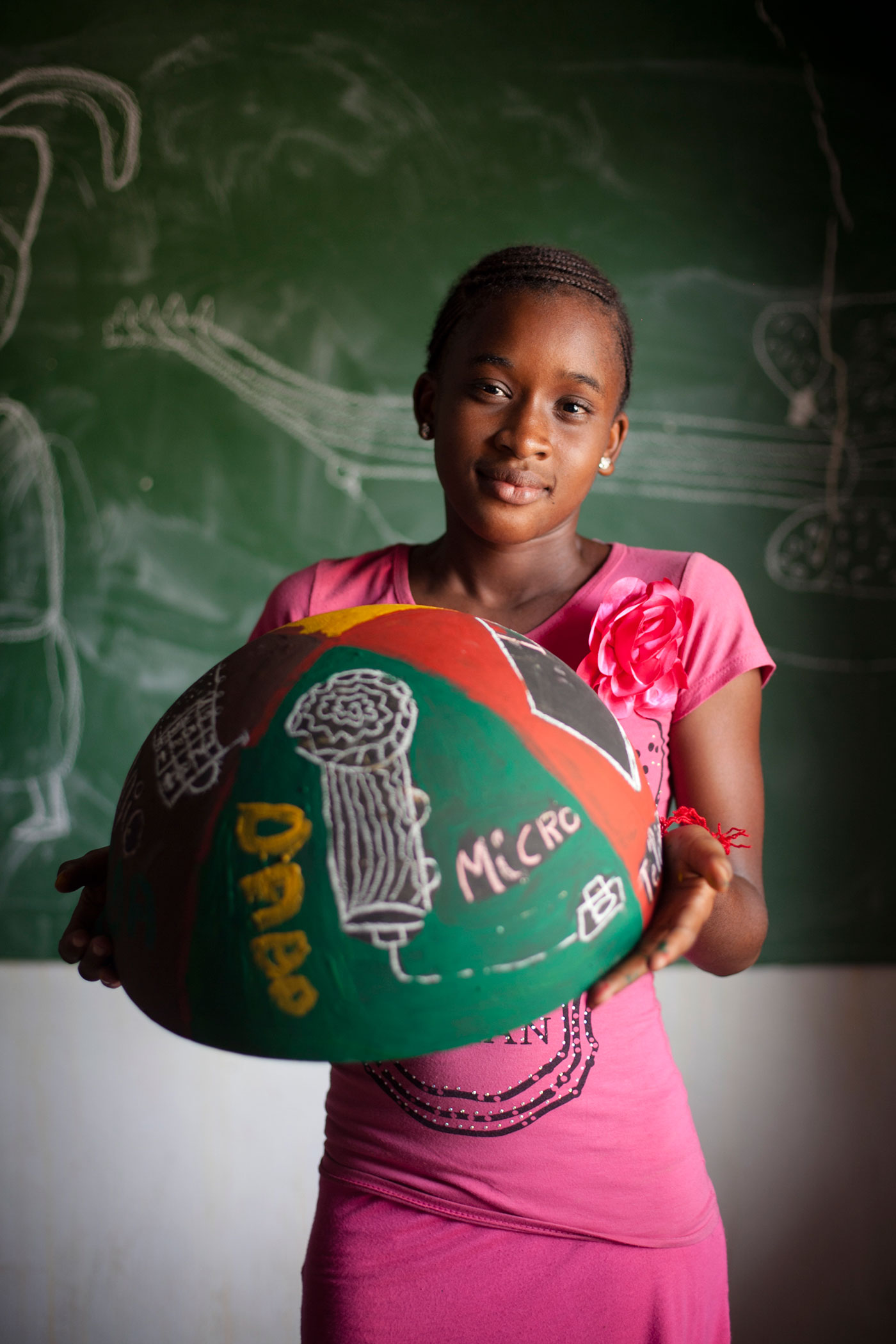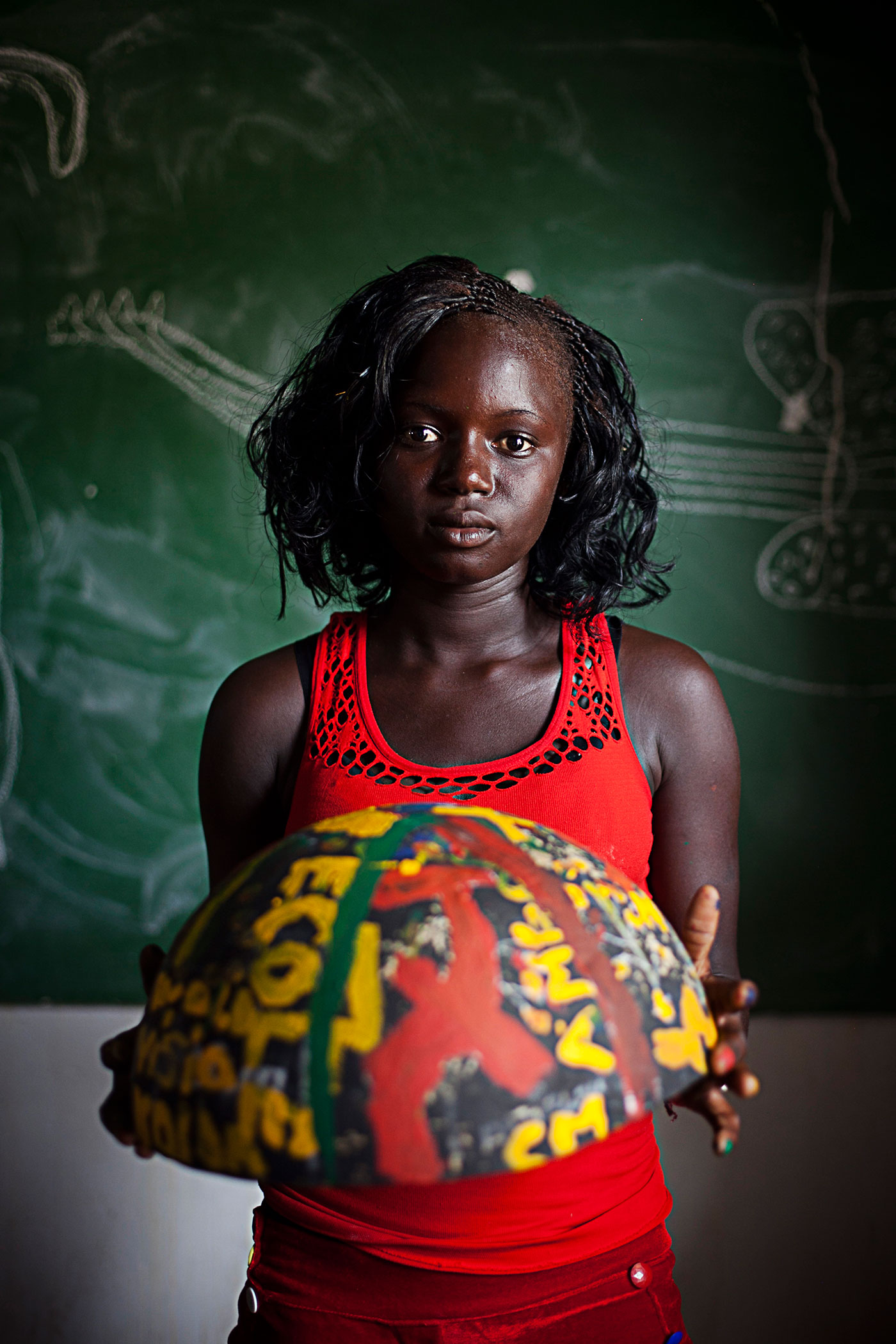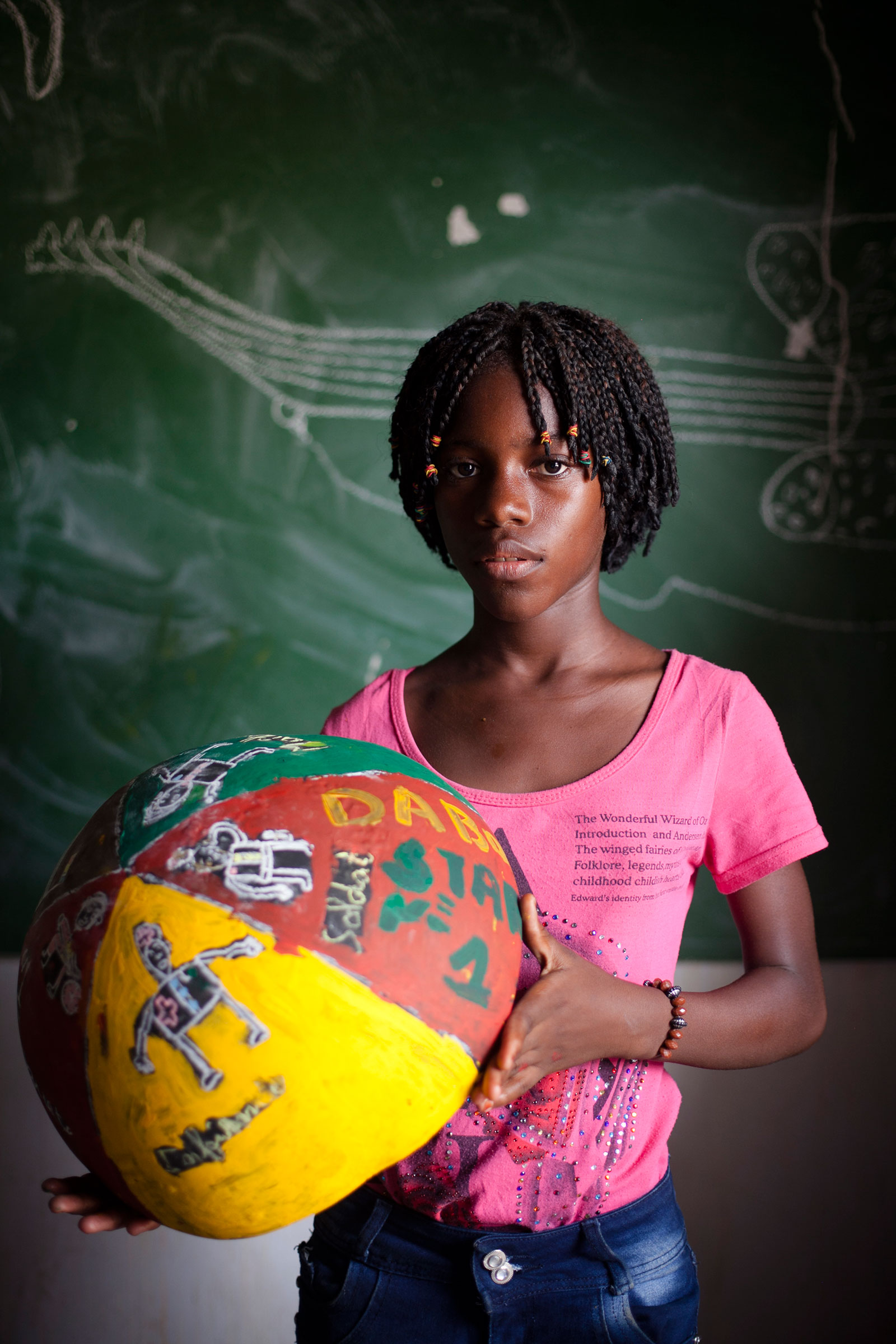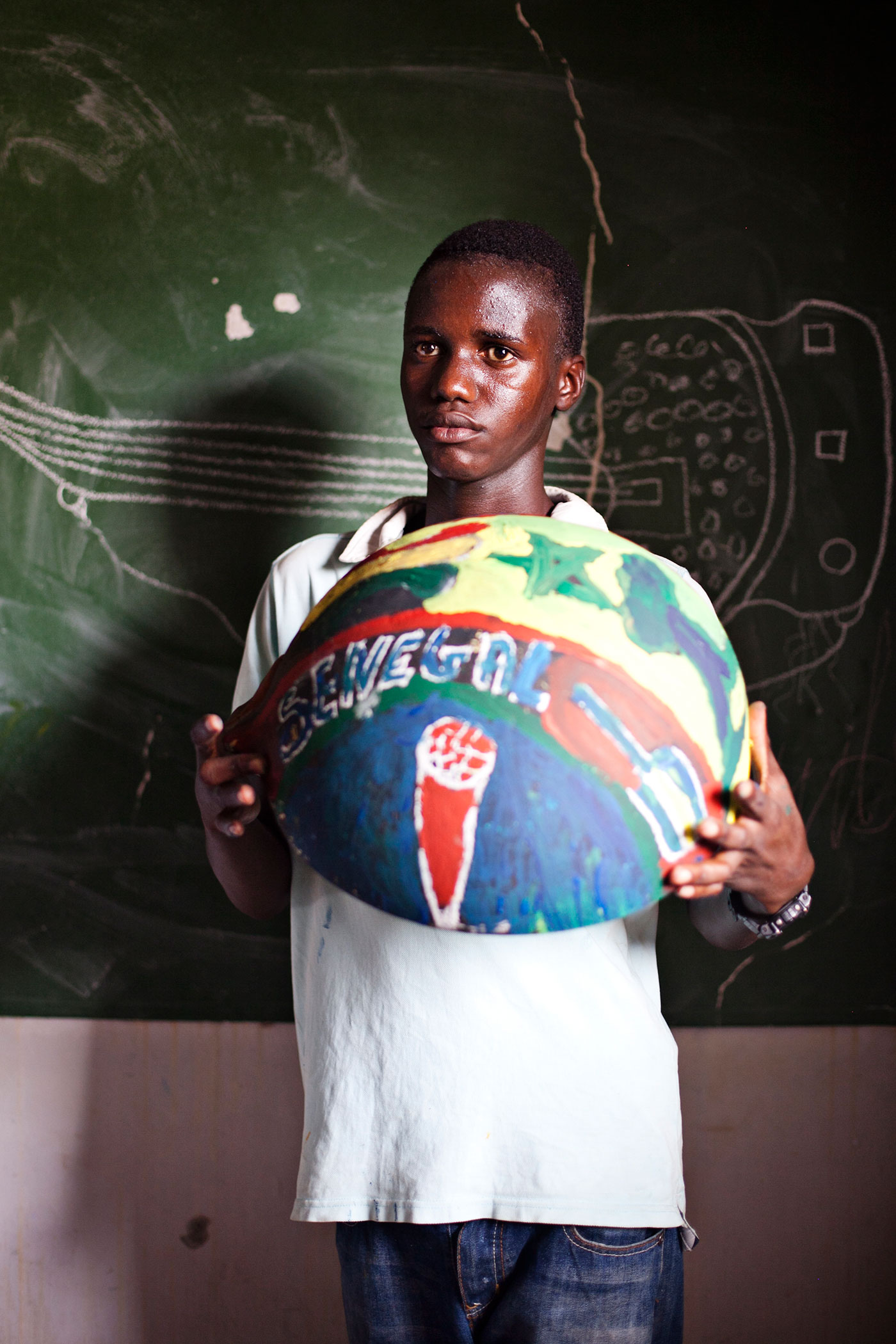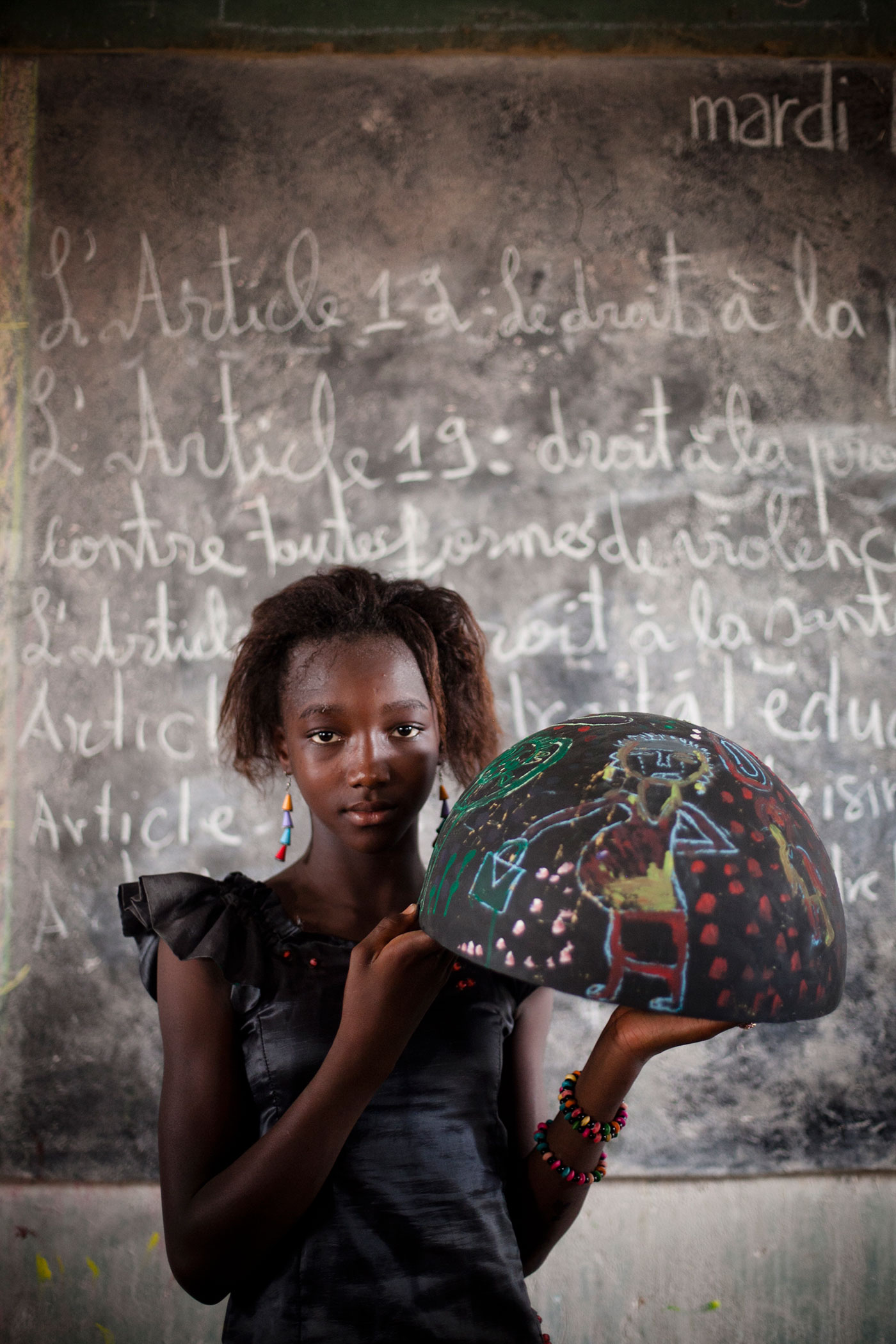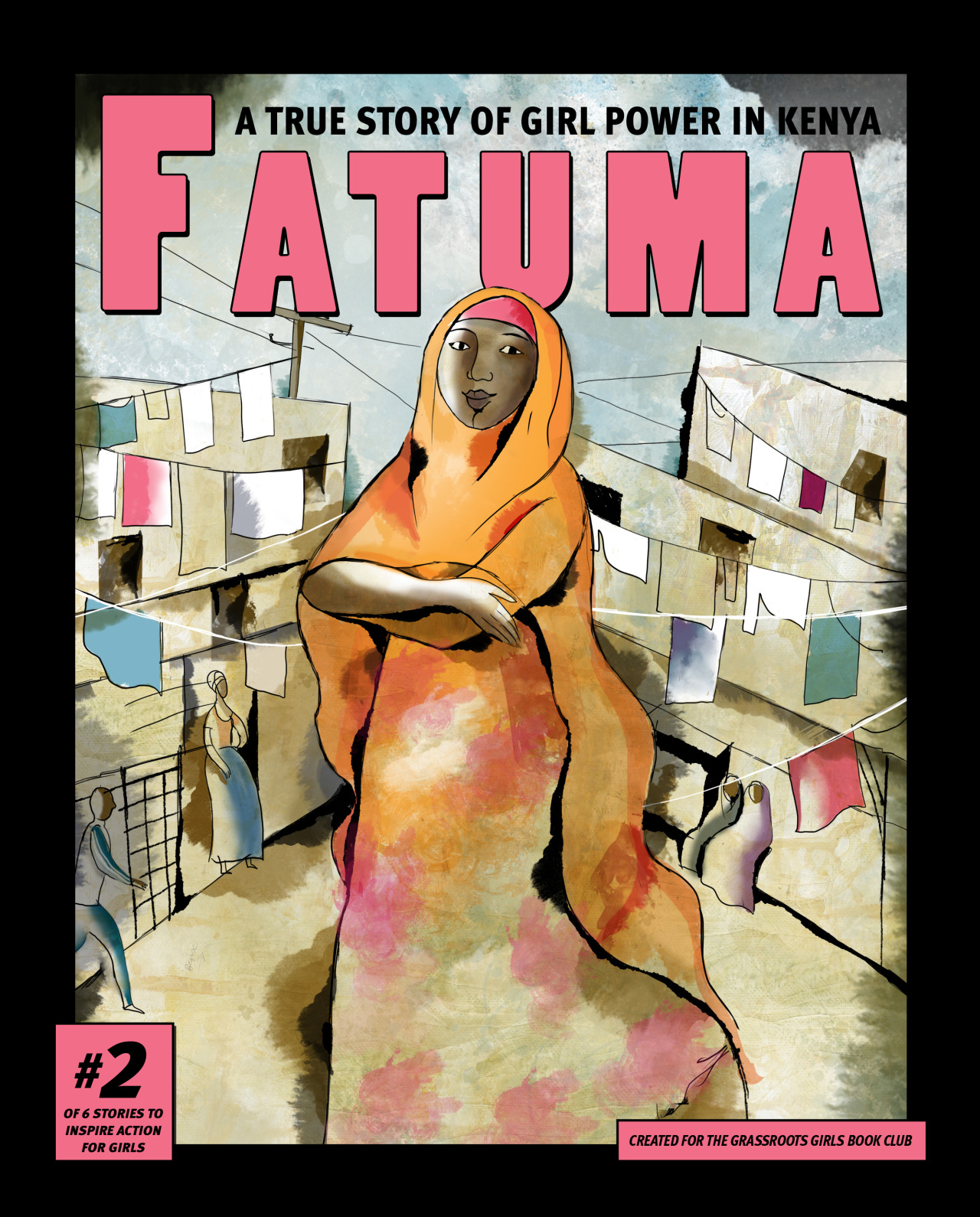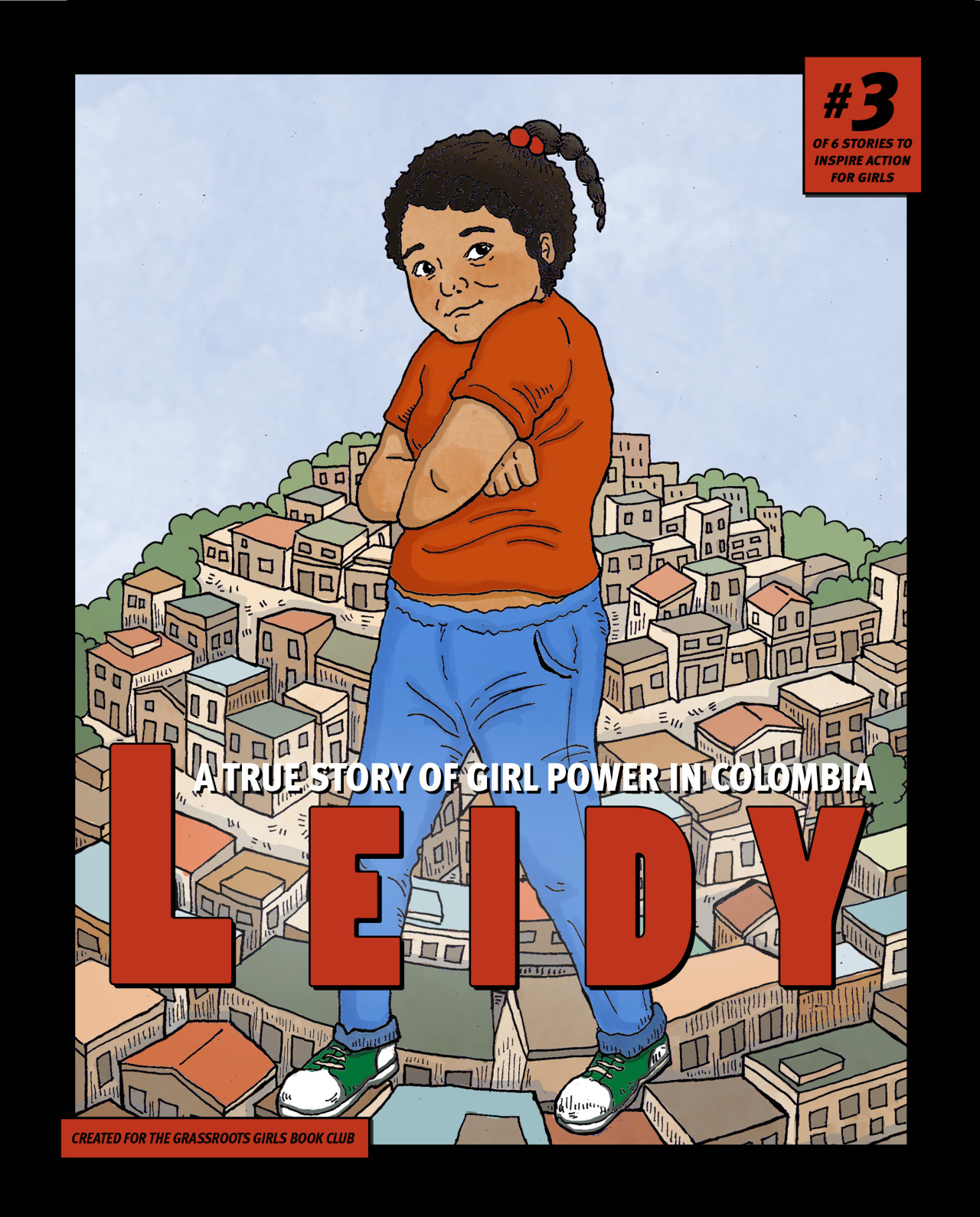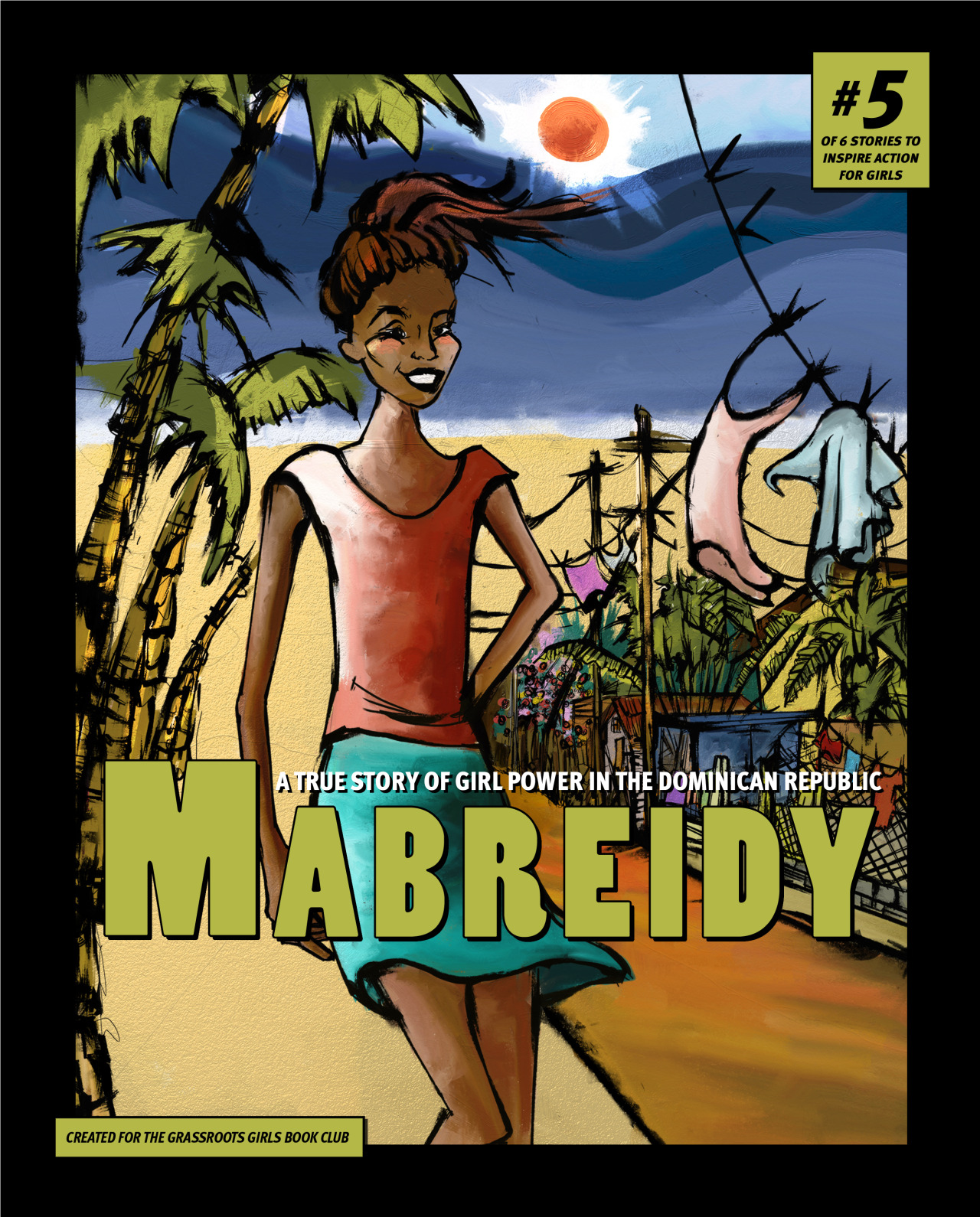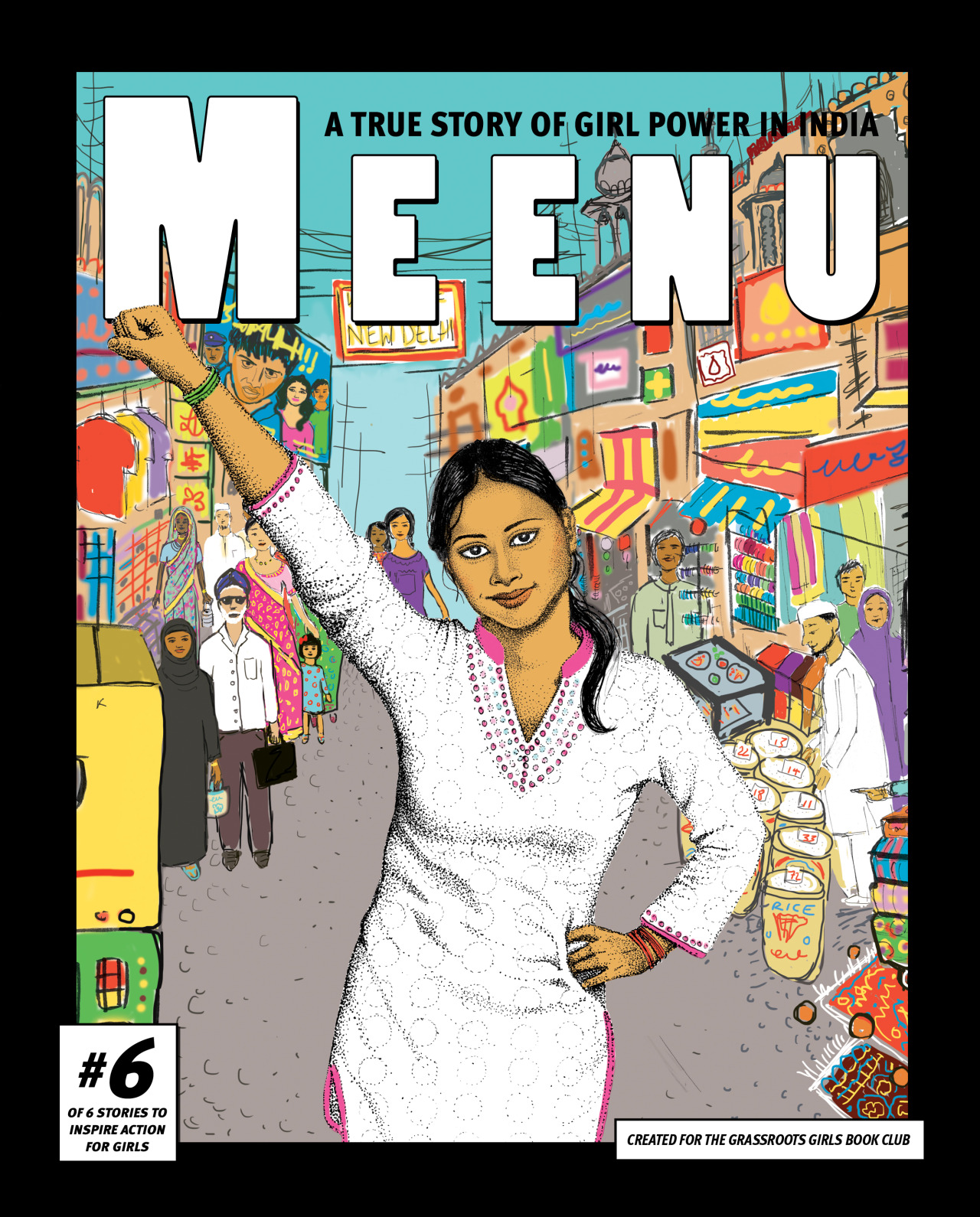The True Stories Project
Section Four: EMPOWERMENT
Empowerment refers to the degree of autonomy and self-determination in people and in communities to lead their lives in a responsible and self-determined way. It includes both individuals’ self-empowerment and leaning on others — professionals, family and community — to overcome powerlessness and lack of influence, and to recognize and use their resources available–both internal and external.
Manifestations of empowerment can include gender equality; economic independence, education, access to health care, reproductive rights, human rights and personal safety and security.
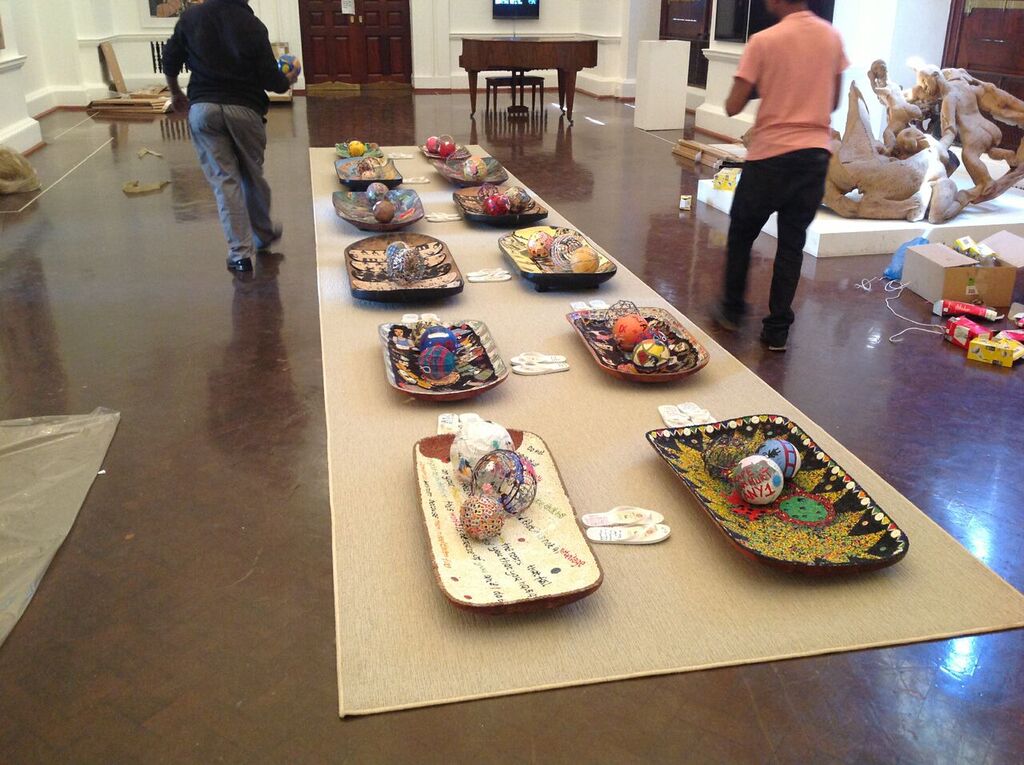
AWARE/OWARE Game for Female Empowerment: South Africa
Art Works for Change, 12 bowl installation, 8 x 30 feet, 2011
AWARE/OWARE has been adapted from the ancient 7,000-year-old African board game Oware. Large calabash gourds — found regionally and typically used for carrying water in Senegal — are used as game bowls. The gourds, painted by children, become a vehicle for storytelling, including to share, explore, and challenge existing misconceptions and misinformation, stigma, and stereotypes surrounding health and social issues.
AWARE/OWARE Game for Female Empowerment: Senegal
Natalie Naccache and Art Works for Change, 2013, photographs by Natalie Naccache © 2013, courtesy of Natalie Naccache and Art Works for Change
In this exhibition, each painted bowl addressed and helped educate the children on the basic human rights entitled to the children as outlined in the United Nations Convention on the Rights of the Children, including education, protection from forced or early marriage, nutrition, reproductive heath, freedom of expression, and protection from child labor.
The True Stories Book
Siddhartha Gallery/Foundation, 2016
Through a series of interactive workshops over a 6-month period, the Kathmandu-based Siddhartha Gallery and Foundation, worked in collaboration with Art Works for Change using the arts and storytelling to help empower young victims of sex trafficking, both boys and girls, in Kathmandu, Nepal.
The books reflect their stories and the healing necessary to overcome their horrific past.
The True Stories Project
Art Works for Change and Girls Inc., video, 5:00 minutes
Art Works for Change used the arts and storytelling activities to help empower teenage girls in Oakland, California. The girls, who are victims of sex trafficking and at-risk for exploitation, participated in a series of interactive workshops over a 6-month period. The video, produced with the nonprofit group Girls Inc., includes some of the weekly activities, as well as commentary on how the project empowered the participants.

More or Less the Same
Lin Tianmaio, 2012, polyurea, silk threads, and stainless steel © 2012, courtesy of the artist
Addressing the female experience, the artist states, “you have to become stronger and enlarge your whole approach to life. You’re influenced by traditional social values in which women are secondary—you can be knocked down by that.” Tianmaio seeks to find a balance. “I believe as women we have to get stronger by ourselves.”
In the series, More or Less the Same, synthetic bones are fused with mechanical hand tools. The human body becomes an instrument of power and strength.
Grassroots Girls Book Club
Grassroots Girls Book Club, Poland, Kenya, Columbia, Malawi, the Dominican Republic and India
Six graphic novellas depict the stories and challenges as shared by six girls living in Poland, Malawi, India, Columbia, Kenya and the Dominican Republic. The series was published by the Grassroots Girls Initiative as a book club. The goal of the project is to stimulate deeper conversations among readers to support the unique potential of adolescent girls to end poverty for themselves and transform the world. Visit the Grassroots Girls Book Club Tumblr page to read these inspiring graphic novellas.
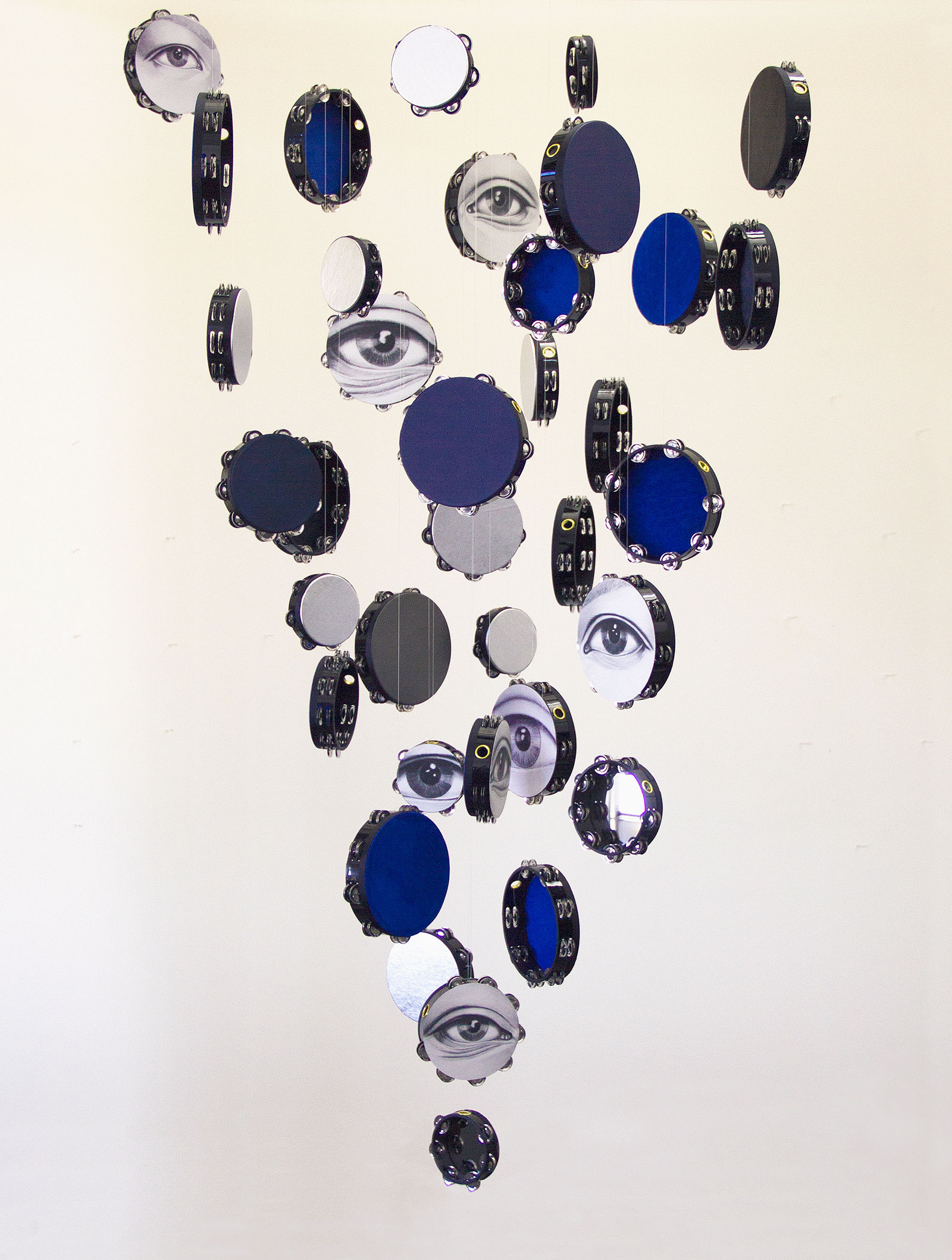
Seeing Now, from Looking Back and Seeing Now series
Lava Thomas, 2015, tambourines, lambskin, leather, ribbon, acrylic mirrors, digital prints, glue, monofilament wire, S-hooks, wood and steel, 12 x 20 x 15 feet, © 2014, courtesy of the artist
Influenced by feminist theory, alternative approaches to portraiture, and African-American devotional and protest traditions, Thomas’ artwork considers themes of social justice, female subjectivity, current events, and the shifting tides of history. In her Looking Back and Seeing Now installation, she creates a meditative space for a dialogue between history and the present. A drawing based on a photograph belonging to her grandmother, a silent face from a past era, confronts the present, challenging the viewer to ask what has changed and what remains the same.


